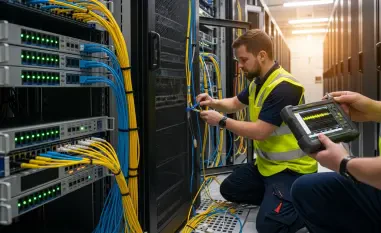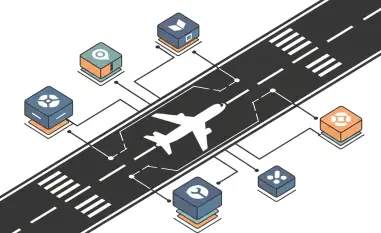The global airline industry, a critical component of international transportation and commerce, continuously evolves as technology shapes its operations. With a vast and complex digital landscape, the industry encompasses a wide range of segments, including passenger and cargo services, airline maintenance, and airport operations. Major airlines and technology partners harness deep integration of advanced systems aimed at enhancing efficiency, customer service, and operational management. As regulatory attention increases, airlines face stringent mandates to protect customer data and safely operate sophisticated network systems.
Overview of the Airline Industry’s Digital Landscape
The rapid digitization of the airline industry reflects a crucial shift in how airlines manage operations, interact with customers, and enhance security. Emerging technologies, such as IoT, AI, and cloud computing, significantly influence airline systems, contributing to real-time communication capabilities and proactive incident management. Market players, from established airlines to new digital service providers, collaborate to pursue innovations refining flight operations and passenger experiences. An intricate regulatory framework, including standards set by aviation authorities worldwide, governs this sector’s technological advancement. These regulations impact data management, cybersecurity practices, and operational protocols, emphasizing the need for rigorous adherence to safety and privacy standards.
Industry Trends in Cybersecurity
Emerging Threats and Technological Developments
The airline industry’s thriving technological ecosystem simultaneously exposes it to evolving cyber threats. Cybercriminals exploit vulnerabilities in complex systems, causing data breaches and operational disruptions. Recent trends underscore the importance of robust defenses against malicious actors, as seen in incidents involving airline data leaks. Emerging technologies, while offering substantial benefits, also necessitate sophisticated cybersecurity measures. Airlines invest in advanced threat detection tools and encryption methods to manage the rapid growth of digital platforms. Consumer expectations for seamless and secure travel experiences drive these technological adoptions, highlighting opportunities for airlines to enhance their security postures.
Market Analysis and Future Projections
As the airline industry navigates digital transformations, cybersecurity investment steadily grows. Analysts project significant growth in the cybersecurity market, driven by the increasing need to safeguard critical infrastructure. Performance indicators suggest a shift toward integrating cybersecurity as a core aspect of airline operations. Forecasts reveal that airlines must adapt to the evolving threat landscape, prioritizing cybersecurity to maintain operational integrity and customer trust. The expansion of cybersecurity budgets and collaborations with technology partners suggests a promising outlook for resilience against cyber threats.
Challenges and Complexities in Cyber Defense
The intricate nature of airline systems presents unique challenges in establishing resilient cybersecurity frameworks. Technological complexities, such as the integration of diverse IT infrastructures, expose potential vulnerabilities that cyber attackers exploit. Regulatory challenges further complicate efforts, as compliance with varying international standards requires significant resource allocation. Market-driven factors, including increased competition and passengers’ growing digital expectations, exacerbate these challenges. Airlines seek innovative solutions, such as adopting adaptive cybersecurity strategies and investing in workforce training, to fortify their defenses against sophisticated cyber threats.
Regulatory Framework and Compliance
Navigating the regulatory landscape is pivotal in the airline industry’s cybersecurity strategy. Compliance with international standards, such as those from the International Air Transport Association (IATA) and the European Union Aviation Safety Agency (EASA), ensures airlines meet stringent privacy and safety requirements. Regulatory changes impact airline practices by mandating updated security measures and data protection protocols. Adhering to these standards emphasizes airlines’ commitment to safeguarding information and sustaining operational integrity. Ongoing collaboration with authorities helps the industry stay abreast of evolving regulations, shaping a proactive approach to managing cybersecurity risks.
Future Directions for Airline Cybersecurity
Looking forward, the airline industry seeks to embrace advanced technologies and strengthen cybersecurity frameworks. Developing areas include quantum computing and AI-driven threat detection, which possess the potential to revolutionize cyber defenses. Market disruptors, such as advancements in biometric authentication and decentralized data management, present opportunities to enhance security protocols. Shifting consumer preferences for personalized digital experiences drive airlines to innovate while maintaining secure environments. Factors such as geopolitical tensions, regulatory evolution, and ongoing research into cybersecurity resilience indicate ongoing growth and adaptation within this critical industry.
Conclusion and Recommendations
The report highlights that the airline industry’s cybersecurity landscape has evolved significantly amid growing threats. Airlines’ proactive measures, including investment in emerging technologies and strategic partnerships, reflect a comprehensive approach to countering cyber risks. Focus on compliance and regulatory adherence ensures alignment with global standards, reinforcing trust and integrity. Moving forward, airlines should continue investing in cybersecurity innovations and workforce development to sustain progress. Awareness of emerging trends will aid the industry in mitigating threats, fostering an environment secure for advancing technology and ensuring exceptional customer experiences.













